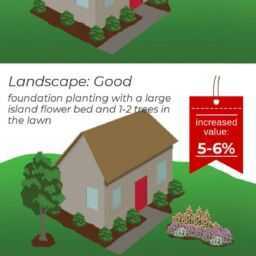The new world of High Definition TV offers an incredible viewing experience, unequaled in the history of home entertainment. But this experience comes at a price, and not just the price in dollars: it also requires you to spend time learning about the technology in order to make the right purchase. One of the first areas of study is the difference between the four main types of HDTV display: plasma, LCD, DLP, and CRT.
Plasma
Most people equate the word “plasma” with HDTV in general. This is somewhat accurate, since plasma technology works best in big displays, and those big displays are usually high definition. A plasma screen is built with two panes of glass, mounted very close to each other. In between the panes is a grid of tiny cells, all containing a special kind of gas. When the TV’s computer sends an electrical signal to a particular cell, it lights up like a neon sign and forms a small part of the picture.
Plasma HDTVs are known for having exceptional color and contrast, good display of fast action, and a generally warm and saturated look to the picture. On the other hand, the glass screen of a plasma often causes a glare problem because it is so glossy, and some plasma screens can experience “burn-in”. Burn-in is a permanent echo of an image that is displayed on screen for a long time, like a cable TV channel logo or a score box in a video game. If proper steps are taken, though, burn-in can be avoided. Plasma HDTVs are a good choice if you like to watch movies in a relatively dark home theater, or if you watch a lot of sports. They are a poor choice for watching in a room with lots of light sources like windows, or for lots of gaming.
LCD
This is the most versatile and fast-evolving technology in the display industry. LCD stands for Liquid Crystal Display, and it can be found in cell phones, car radios, computer screens, nearly everywhere you look. Until recently, it was hard for manufacturers to make them bigger than about 40 inches, so plasma dominated in the large screens and LCD dominated in the smaller screens. Now, however, they are working well in HDTVs as big as 56 inches diagonally.
Most LCD displays are inferior to plasma in terms of contrast level, color saturation and fast-action smoothness. They can be much brighter, though, and the plastic surface of the screen doesn’t reflect light like a plasma, so LCDs are better in a bright environment. And some of the more expensive LCD screens, like the Sony Bravia XBR4, have a picture as good as any plasma. LCD sets are also immune to burn-in, and so are better to use with a gaming system or as a computer display.
DLP
If you’re looking for a really big TV set for a reasonable price, a DLP set might be the answer. They are common in sizes of around 70 inches diagonally, and are typically about half the price of a similar sized plasma. DLP stands for Digital Light Processing, and they form the picture by shooting a beam of light at a rapidly oscillating mirror in the back of the set. The light is then projected, bit by bit, onto the backside of the screen, forming the picture.
DLP sets have excellent contrast levels and picture quality, but sometimes look darker when you watch the screen from an angle. They also have a thicker profile than plasmas and LCDs, usually about 16-20 inches as opposed to 5 or 6, so it’s tricky or impossible to hang one on a wall. For a home theater room with no windows and not too wide of a viewing area, a DLP is the ideal choice.
CRT
And finally, the good old cathode ray tube is still an option for HDTV. This is the same technology we have seen in TV sets since TV began, and though it seems to be “phasing out”, it still holds some advantages over other types. They can produce a much better picture, with better color and black levels, than a similarly-priced plasma or LCD. In fact, since they are so inexpensive, it might be hard to even find a similarly-priced plasma.
The big hit against CRTs is the fact that they can’t be made in sizes much bigger than 30 or 35 inches, so if you plan to sit more than 10 feet from the screen you should consider something else. And at that size, they are extremely heavy and bulky. They also can’t quite reach the same resolution levels as the other types of HDTV.
Whichever type of HDTV you decide on, be sure to spend enough time learning the ropes to get a feel for what’s important to you and what’s not. A good place to continue your education is a simple HDTV tutorial website, where you can get to know the basic ideas and look through the reviews and comments of other people who have already taken the plunge.
AUTOPOST by BEDEWY VISIT GAHZLY



